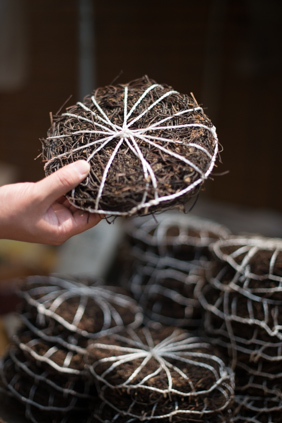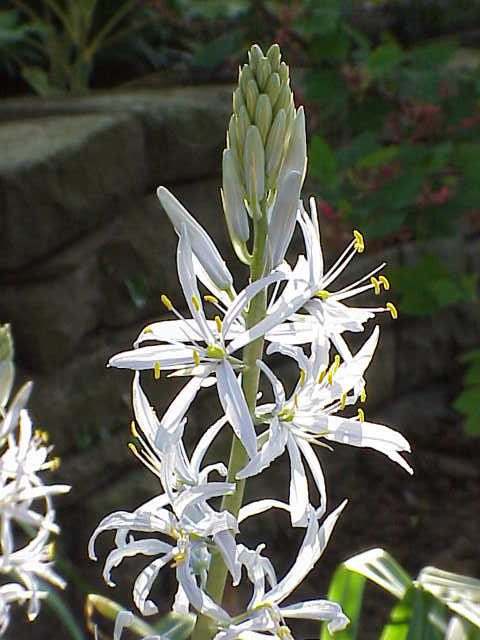|
South Lake Union, Seattle, Washington
South Lake Union (sometimes SLU) is a neighborhood in Seattle, Washington, so named because it is at the southern tip of Lake Union. The official boundaries of the City of Seattle Urban Center are Denny Way on the south, beyond which is Denny Triangle; Interstate 5 on the east, beyond which is Capitol Hill; Aurora Avenue N. ( State Route 99) on the west, beyond which is Lower Queen Anne; and Galer Street, Lake Union, and E. Newton Place on the north, beyond which are Westlake and Eastlake,Seattle Department of Planning and DevelopmentSouth Lake Union Neighborhood Plan but like most Seattle neighborhoods, its precise boundaries are indeterminate. In particular Cornish College of the Arts and Vulcan Inc. properties such as 2200 and 2201 Westlake are officially in Denny Triangle for city planning and zoning purposes but often referred to as South Lake Union. The portion of South Lake Union east of Fairview Avenue N. is historically known as Cascade. Historic structures continue ... [...More Info...] [...Related Items...] OR: [Wikipedia] [Google] [Baidu] |
List Of Neighborhoods In Seattle
The city of Seattle, Washington, contains many districts and neighborhoods. The city's former mayor Greg Nickels has described it as "a city of neighborhoods". Early European settlers established widely scattered settlements on the surrounding hills, which grew into neighborhoods and autonomous towns. Conurbations tended to grow from such towns or from unincorporated areas around trolley stops during the 19th and early 20th centuries; the city has consequently suffered from transportation and street-naming problems. Definition of Seattle neighborhoods Seattle was established during an economic boom fueled by the timber industry; its early years were characterized by hasty expansion and development, under which residential areas were loosely defined by widely scattered plats. This arrangement was further solidified by the establishment of locally initiated community clubs, public libraries, public schools, and public parks, which created a sense of community and civic particip ... [...More Info...] [...Related Items...] OR: [Wikipedia] [Google] [Baidu] |
Cornish College Of The Arts
Cornish College of the Arts (CCA) is a private art college in Seattle, Washington. It was founded in 1914. History Cornish College of the Arts was founded in 1914 as the Cornish School of Music, by Nellie Cornish (1876–1956), a teacher of piano. Cornish would go on to serve as the school's director for its first 25 years, until 1939. The Cornish School of Music began its operations in rented space in the Boothe (or BoothMildred AndrewsCornish School HistoryLink Essay 596, December 26, 1998, updated on June 28, 2006. Retrieved 2010-05-25.) Building on Broadway and Pine Street. As Cornish developed the idea of her school, she initially turned to the Montessori-based pedagogical method of Evelyn Fletcher-Copp, but turned at last to the progressive musical pedagogy of Calvin Brainerd Cady, who had worked as musical director with John Dewey as the latter set up his seminal progressive educational project, what is now the University of Chicago Laboratory Schools. Conceived by Cor ... [...More Info...] [...Related Items...] OR: [Wikipedia] [Google] [Baidu] |
Sagittaria
''Sagittaria'' is a genus of about 303. Sagittaria Linnaeus ''Flora of North America'' species of aquatic plants whose members go by a variety of common names, including arrowhead, duck potato, katniss, Omodaka (沢瀉 in Japanese), swamp potato, tule potato, and wapato (or wapatoo). Most are native to South America, South, Central America, Central, and North America, but there are also some from Europe, Africa, and Asia. Description Sagittaria plant stock (the perennial rhizome) is a horizontal creeper (stoloniferous) and obliquely obovate, the margins winged, with apical or ventral beak; in other words, they are a small, dry, one-seeded fruit that do not open to release the seed, set on a slant, narrower at the base, with winged edges, and havi ...[...More Info...] [...Related Items...] OR: [Wikipedia] [Google] [Baidu] |
Bracken
Bracken (''Pteridium'') is a genus of large, coarse ferns in the family Dennstaedtiaceae. Ferns (Pteridophyta) are vascular plants that have alternating generations, large plants that produce spores and small plants that produce sex cells (eggs and sperm). Brackens are noted for their large, highly divided leaves. They are found on all continents except Antarctica and in all environments except deserts, though their typical habitat is moorland. The genus probably has the widest distribution of any fern in the world. The word ''bracken'' is of Old Norse origin, related to Swedish ''bräken'' and Danish ''bregne'', both meaning fern. In the past, the genus was commonly treated as having only one species, ''Pteridium aquilinum'', but the recent trend is to subdivide it into about ten species. Like other ferns, brackens do not have seeds or fruits, but the immature fronds, known as ''fiddleheads'', are sometimes eaten, although some are thought to be carcinogenic. Description an ... [...More Info...] [...Related Items...] OR: [Wikipedia] [Google] [Baidu] |
Camassia
''Camassia'' is a genus of plants in the asparagus family native to North America. Common names include camas, quamash, Indian hyacinth, camash, and wild hyacinth. It grows in the wild in great numbers in moist meadows. They are perennial plants with basal linear leaves measuring in length, which emerge early in the spring. They grow to a height of , with a multi-flowered stem rising above the main plant in summer. The six-petaled flowers vary in color from pale lilac or white to deep purple or blue-violet. Camas can appear to color entire meadows when in flower. Taxonomy and species Historically, the genus was placed in the lily family (Liliaceae), when this was very broadly defined to include most lilioid monocots., in When the Liliaceae was split, in some treatments ''Camassia'' was placed in a family called Hyacinthaceae (now the subfamily Scilloideae). DNA and biochemical studies have led the Angiosperm Phylogeny Group to reassign ''Camassia'' to the family Asparag ... [...More Info...] [...Related Items...] OR: [Wikipedia] [Google] [Baidu] |
Deer
Deer or true deer are hoofed ruminant mammals forming the family Cervidae. The two main groups of deer are the Cervinae, including the muntjac, the elk (wapiti), the red deer, and the fallow deer; and the Capreolinae, including the reindeer (caribou), white-tailed deer, the roe deer, and the moose. Male deer of all species (except the water deer), as well as female reindeer, grow and shed new antlers each year. In this they differ from permanently horned antelope, which are part of a different family (Bovidae) within the same order of even-toed ungulates (Artiodactyla). The musk deer (Moschidae) of Asia and chevrotains (Tragulidae) of tropical African and Asian forests are separate families that are also in the ruminant clade Ruminantia; they are not especially closely related to Cervidae. Deer appear in art from Paleolithic cave paintings onwards, and they have played a role in mythology, religion, and literature throughout history, as well as in heraldry, such as ... [...More Info...] [...Related Items...] OR: [Wikipedia] [Google] [Baidu] |
Elliott Bay
Elliott Bay is a part of the Central Basin region of Puget Sound. It is in the U.S. state of Washington, extending southeastward between West Point in the north and Alki Point in the south. Seattle was founded on this body of water in the 1850s and has since grown to encompass it completely. The waterway it provides to the Pacific Ocean has served as a key element of the city's economy, enabling the Port of Seattle to become one of the busiest ports in the United States. History The Duwamish people lived in the vicinity of Elliott Bay and the Duwamish River for thousands of years and had established at least 17 settlements by the time white settlers came in the 1850s. Among the earliest white settlements was by the Denny Party at New York Alki, which is in the present-day neighborhood of Alki in West Seattle, however after a hard winter they shifted across Elliott Bay near the present-day Pioneer Square, which became Seattle. Over the years the city expanded to cover all of the ... [...More Info...] [...Related Items...] OR: [Wikipedia] [Google] [Baidu] |
Coast Salish
The Coast Salish is a group of ethnically and linguistically related Indigenous peoples of the Pacific Northwest Coast, living in the Canadian province of British Columbia and the U.S. states of Washington and Oregon. They speak one of the Coast Salish languages. The Nuxalk (Bella Coola) nation are usually included in the group, although their language is more closely related to Interior Salish languages. The Coast Salish are a large, loose grouping of many nations with numerous distinct cultures and languages. Territory claimed by Coast Salish peoples span from the northern limit of the Salish Sea on the inside of Vancouver Island and covers most of southern Vancouver Island, all of the Lower Mainland and most of Puget Sound and the Olympic Peninsula (except for territories of now-extinct Chemakum people). Their traditional territories coincide with modern major metropolitan areas, namely Victoria, Vancouver, and Seattle. The Tillamook or Nehalem around Tillamook, Oregon are ... [...More Info...] [...Related Items...] OR: [Wikipedia] [Google] [Baidu] |
Native Americans In The United States
Native Americans, also known as American Indians, First Americans, Indigenous Americans, and other terms, are the Indigenous peoples of the mainland United States ( Indigenous peoples of Hawaii, Alaska and territories of the United States are generally known by other terms). There are 574 federally recognized tribes living within the US, about half of which are associated with Indian reservations. As defined by the United States Census, "Native Americans" are Indigenous tribes that are originally from the contiguous United States, along with Alaska Natives. Indigenous peoples of the United States who are not listed as American Indian or Alaska Native include Native Hawaiians, Samoan Americans, and the Chamorro people. The US Census groups these peoples as " Native Hawaiian and other Pacific Islanders". European colonization of the Americas, which began in 1492, resulted in a precipitous decline in Native American population because of new diseases, wars, ethni ... [...More Info...] [...Related Items...] OR: [Wikipedia] [Google] [Baidu] |
Duwamish People
The Duwamish ( lut, Dxʷdəwʔabš, ) are a Lushootseed-speaking Native American tribe in western Washington, and the indigenous people of metropolitan Seattle, where they have been living since the end of the last glacial period (c. 8000 BCE, 10,000 years ago). The Duwamish Tribe descends from at least two distinct groups from before intense contact with people of European ancestry—the ''People of the Inside'' (the environs of Elliott Bay) and the ''People of the Large Lake'' ( Lake Washington)—and continues to evolve both culturally and ethnically. By historic language, the Duwamish are (Skagit-Nisqually) Lushootseed; Lushootseed is a Salishan language. Adjacent tribes throughout the Puget Sound- Strait of Georgia basin were, and are, interconnected and interrelated, yet distinct. Today, some Duwamish people are enrolled in the federally recognized Tulalip Tribes of Washington as well as the Muckleshoot Tribe. The present-day Duwamish Tribe developed in parallel with th ... [...More Info...] [...Related Items...] OR: [Wikipedia] [Google] [Baidu] |
Lake Washington
Lake Washington is a large freshwater lake adjacent to the city of Seattle. It is the largest lake in King County and the second largest natural lake in the state of Washington, after Lake Chelan. It borders the cities of Seattle on the west, Bellevue and Kirkland on the east, Renton on the south and Kenmore on the north, and encloses Mercer Island. The lake is fed by the Sammamish River at its north end and the Cedar River at its south. Lake Washington received its present name in 1854 after Thomas Mercer suggested it be named after George Washington, as the new Washington Territory had been named the year before. Earlier names for the lake include the Duwamish name ''Xacuabš'' (Lushootseed: literally "''xacu''" ''great-amount-of-water + "abš" people''), which referred to peoples who stayed along the coastline of Lake Washington, as well as Lake Geneva by Isaac N. Ebey; Lake Duwamish in railroad surveys under Governor Isaac Stevens; At-sar-kal in a map sketched by engin ... [...More Info...] [...Related Items...] OR: [Wikipedia] [Google] [Baidu] |




.jpg)


